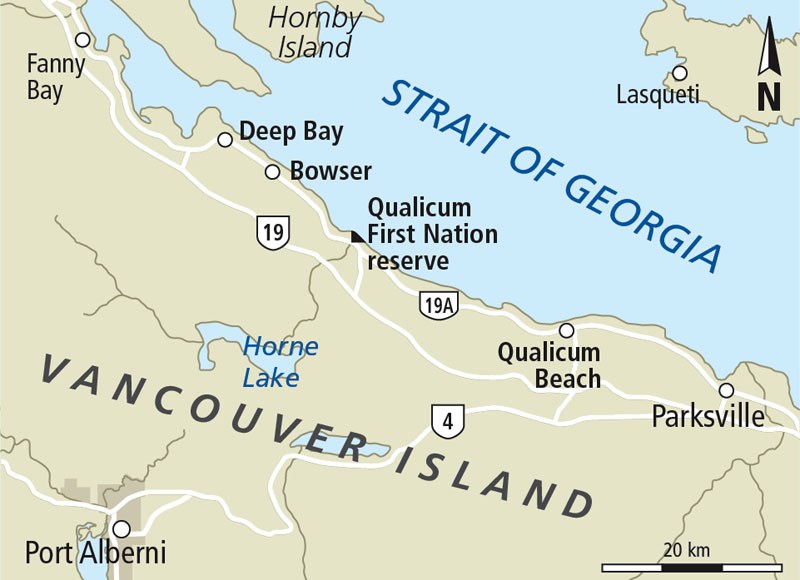A decision by the provincial government to allow increased harvesting of seaweed from the central east coast of Vancouver Island has sounded alarm bells in parts of the scientific community there.
In addition to allowing three licensed companies to increase their take to 500 tons annually in the Deep Bay and Bowser areas from a previous limit of 300 tons, the B.C. Ministry of Agriculture has offered two additional licences for 250 tons each for the area fronting the Qualicum First Nation reserve in Qualicum Beach.
The licences are for a type of red algae seaweed called Mazzaella japonica that looks like soggy detritus washed up on shore but is more like pure gold, with increasing global demand for its use in everything from toothpaste to ice cream.
The government based its decision on a May 2015 Vancouver Island University study that found the harvest did not have a detectable effect on the amount of this seaweed deposited on the beaches in the study area.
However, Ian Birtwell, a retired federal Department of Fisheries and Oceans scientist who lives in Bowser, said in an interview he along with another former DFO scientist, a forage fish biologist and an environmental consultant outlined their concerns in 2013 in a report to the federal and provincial governments over the seaweed harvest.
“We didn’t get a great deal of concern for our positions,” Birtwell said. “I personally don’t think it’s wise,” he said of the province’s decision to increase the harvest quota and the number of licensees.
Birtwell is concerned that the seaweed’s removal will rob marine species of needed nutrients.
“Obviously, if one takes away the very base of the food source that is providing food for those organisms higher up the food chain, then logically there is gong to be an increasing impact over time.”
Baynes Sound, which is just north of where most of the seaweed is harvested, supplies about 50 per cent of the province’s shellfish, Birtwell added, pointing out that water tends to drift north from the seaweed area to Baynes Sound.
“Who has decided whether there is a surplus [of seaweed]?” he said, adding there are no studies he knows of that have determined this.
He said area residents get very upset about vehicles driving along the shore to pick up the harvest, because the tires damage the eggs of forage fish species on which salmon feed.
He said he was part of an advisory committee to the Vancouver Island University study but resigned because “I felt it was more political appeasement than scientific endeavour.”
The study says: “We do not know how valuable Mazzaella japonica is to the function of the ecosystem. Therefore, it is not possible to determine if the impact of its removal is positive or negative.”
The authors said they were unable to find published literature on the chemical breakdown of Mazzaella japonica and therefore could not calculate the effects of the removal of these nutrients.
However, the study suggested that the amount of seaweed removed is small relative to the amount that accumulates over the winter season.
“These observations lead us to believe that the removal of Mazzaella japonica [limiting production] would not have a major impact,” the study concluded.



